Article and photos by Josette King
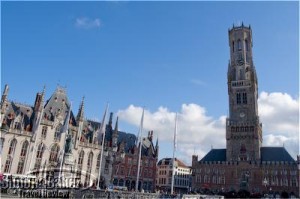
The Grote Markt is a favorite gathering spot with tourists
Bruges is unique; a city where time stood still at the height of its grandeur, half a millennium ago. Today, with most of its medieval architecture intact and its 430 hectare (1.6 square mile) historic center, it is one of Europe’s most picturesque cities; one that draws an estimated two million visitors a year, many of whom come for the day. European high-speed trains have put Bruges within an easy three-hours’ reach of Paris, Amsterdam, London, and the western part of Germany, allowing sightseers a quick look on their way from one capital city to the next.
These daytime tourists tend to congregate around the Grote Markt (Market Square), the grandest square and commercial heart of medieval Bruges since the thirteenth century, dominated by its 272 foot (83 meter) belfry, and the Burg (Town Square) that was, and remains, its administrative core. The cobbled streets surrounding the two squares are conveniently lined with shops brimming with the chocolate and lace for which the city is famous, ensuring that visitors do not have to stray far afield to make the most of their excursion.
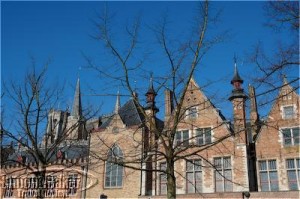
Gothic mansions in the morning sun
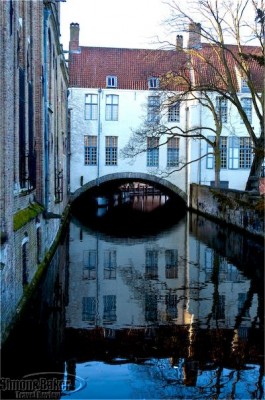
A medieval home mirrored in an ancient canal
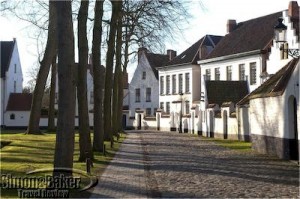
The Beguinage is a serene retreat at the edge of the city
But a few minutes’ walk away in any direction, the true romance of Bruges unfolds. It becomes an uncrowded, magical medieval place where time references fade away. That is the Bruges which has drawn me back several times over the decades, to leisurely wander in a world unchanged for centuries. Regal swans glide by canal-side homes and humpbacked stone bridges lead into mazes of narrow streets opening onto squares bordered by stately Gothic mansions, or culs-de-sac surrounded with whitewashed almshouses. There are always surprises, previously overlooked gems to be discovered.
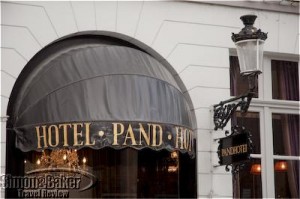
The Romantik Pand Hotel was a welcoming haven of luxury
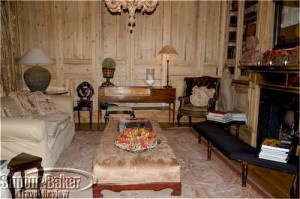
The library at the Romantik Pand Hotel
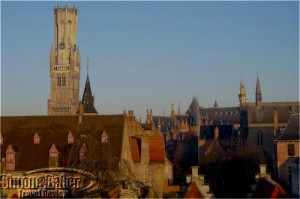
My suite overlooked the medieval skyline
On my recent visit one such jewel was the Romantik Pand Hotel, an early eighteenth century carriage house on a tiny tree-shaded square in the heart of the historic center. Owned and managed by the Vanhaecke family, the property had been lovingly transformed into a luxury boutique hotel. Personally decorated by Mrs. Chris Vanhaeke, an enthusiastic antiques collector, with superb pieces from her collection, it had the authentic feel of a gracious home from a bygone era (with the welcome addition of a whirlpool bath and WiFi Internet access in my suite).
The pleasure of my visit was further enhanced by the genuinely thoughtful hospitality of the management and staff, and the sense that no detail had been overlooked to ensure that I would feel truly at home during my visit with them. In fact, as I look back on my stay at the Romantik Pand Hotel, I suspect it may have altered the way I will think of future visits to Bruges. From now on, it will probably start with a yearning to return to the Pand, with the added bonus that it sits in the heart of one of the most romantic cities in Europe. Click here to read more about my visit to Bruges and my stay at the Romantik Pand Hotel.








